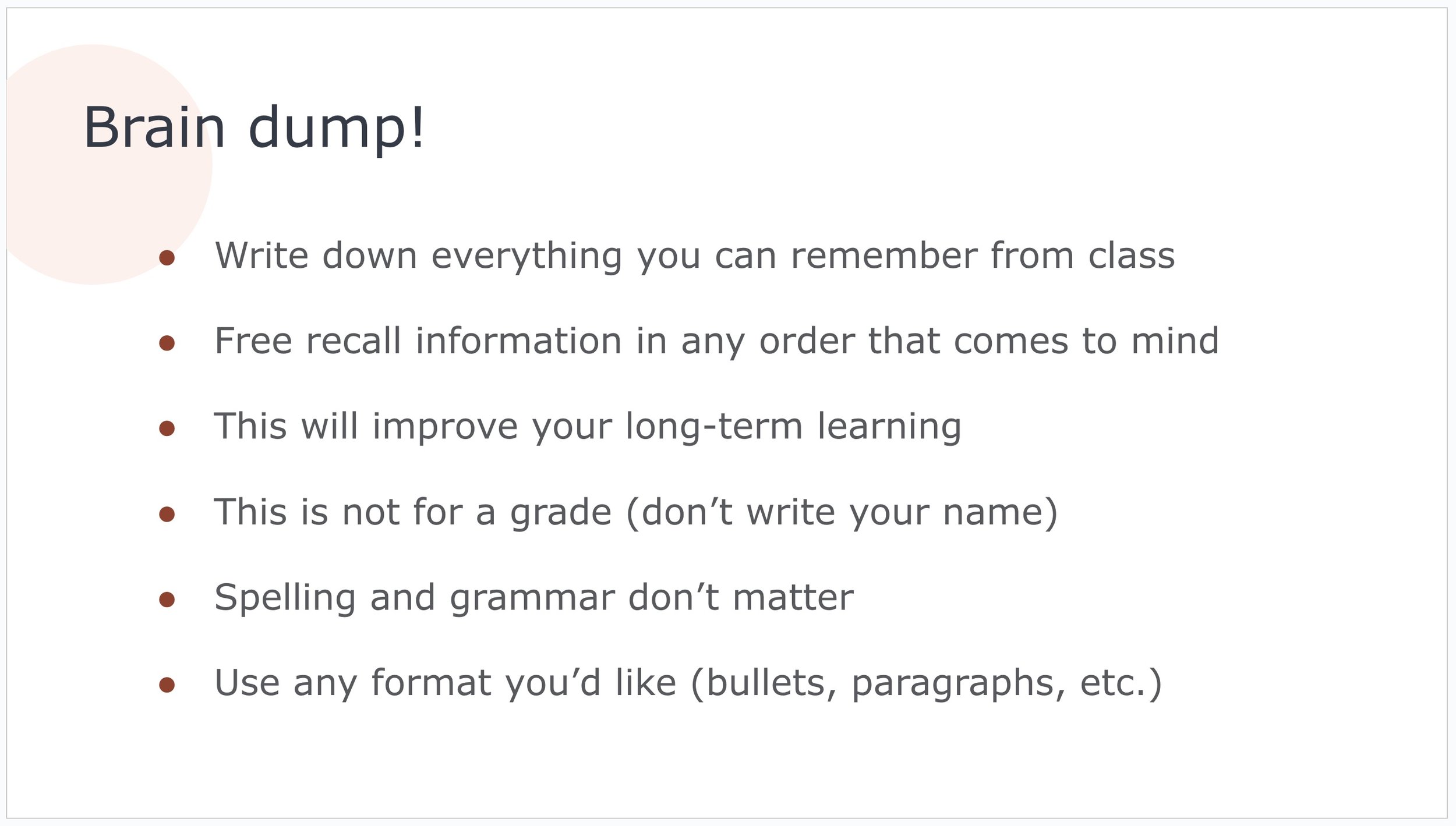Switch from reviewing to retrieving in 5 minutes or less
/
By Pooja K. Agarwal, Ph.D.
It’s exam time. Are you holding review sessions for your students?
Here’s how to switch your review sessions to *retrieve* sessions with a 5-minute brain dump.
This is one of the simplest switches you can make from getting information into students’ heads to getting information out of students’ heads. Reduce anxiety, increase confidence, improve metacognition, and boost students’ memory for course material beyond their final exam.
P.S. Are you wrapping up your end-of-school budget? I hope you’ll consider purchasing my book, Powerful Teaching! Email me (ask@retrievalpractice.org) for information about a bulk discount.
Lesson plan for a quick brain dump
It’s the end of the school year and students are going to cram. Why? Because it works. As decades of research demonstrate, cramming improves learning in the short-term, but it leads to forgetting in the long-term (download my practice guide PDF for more info, which I co-wrote with cognitive scientist Dr. Shana Carpenter).
As I like to point out, easy learning leads to easy forgetting. Think about your own experience in high school and college: you would anxiously cram for an exam, get a good grade, and then forget everything.
Even though students are going to cram, how can you make review sessions more productive? Turn them into “retrieve sessions” with a brain dump. Known as “free recall” in the scientific literature, my colleagues and I have published research on the benefits of brain dumps: they’re a simple activity for retrieval practice, they help students organize their knowledge, and they improve metacognition (how students think about their own learning). Brain dumps boost learning for a wide range of grade levels and content areas, too.
Here’s my lesson plan:
Hand out blank paper to students
Go through some basic instructions: write down everything you can remember, this is ungraded, and use any format you like
Give students 5 minutes to write silently
You’re done! No need to follow up with a class discussion; simply launch into your review session as planned. Your students will already have a sense of accomplishment, and a better sense of what they do (and don’t) need to cram.
Tips for a successful brain dump
Using blank paper provides students with space to draw and retrieve concept maps without worrying about complete sentences, handwriting, spelling, or formal punctuation (check out more research on concept maps by Dr. Janell Blunt).
Instead of an anxiety-provoking countdown or alarm, my students love this radial timer (I embed the YouTube video in my Google Slides with the audio muted).
You can simply move on after the brain dump, follow it with think-pair-share (don’t skip the think step), or include it in a fun activity I developed called Leave One Add One.
Check out my tips when students can’t retrieve anything (they can retrieve something, I promise).
Incorporate brain dumps earlier in the semester or school year so that your students will be familiar with ungraded retrieval practice and they’ll know what to expect.
Don’t grade your students’ brain dumps; don’t even collect them. Keep the big picture goal in mind: brain dumps are a learning strategy, not an assessment strategy.
Let your students keep the brain dump as notes and encourage them to use brain dumps as a study strategy to boost their learning independently at home.



















